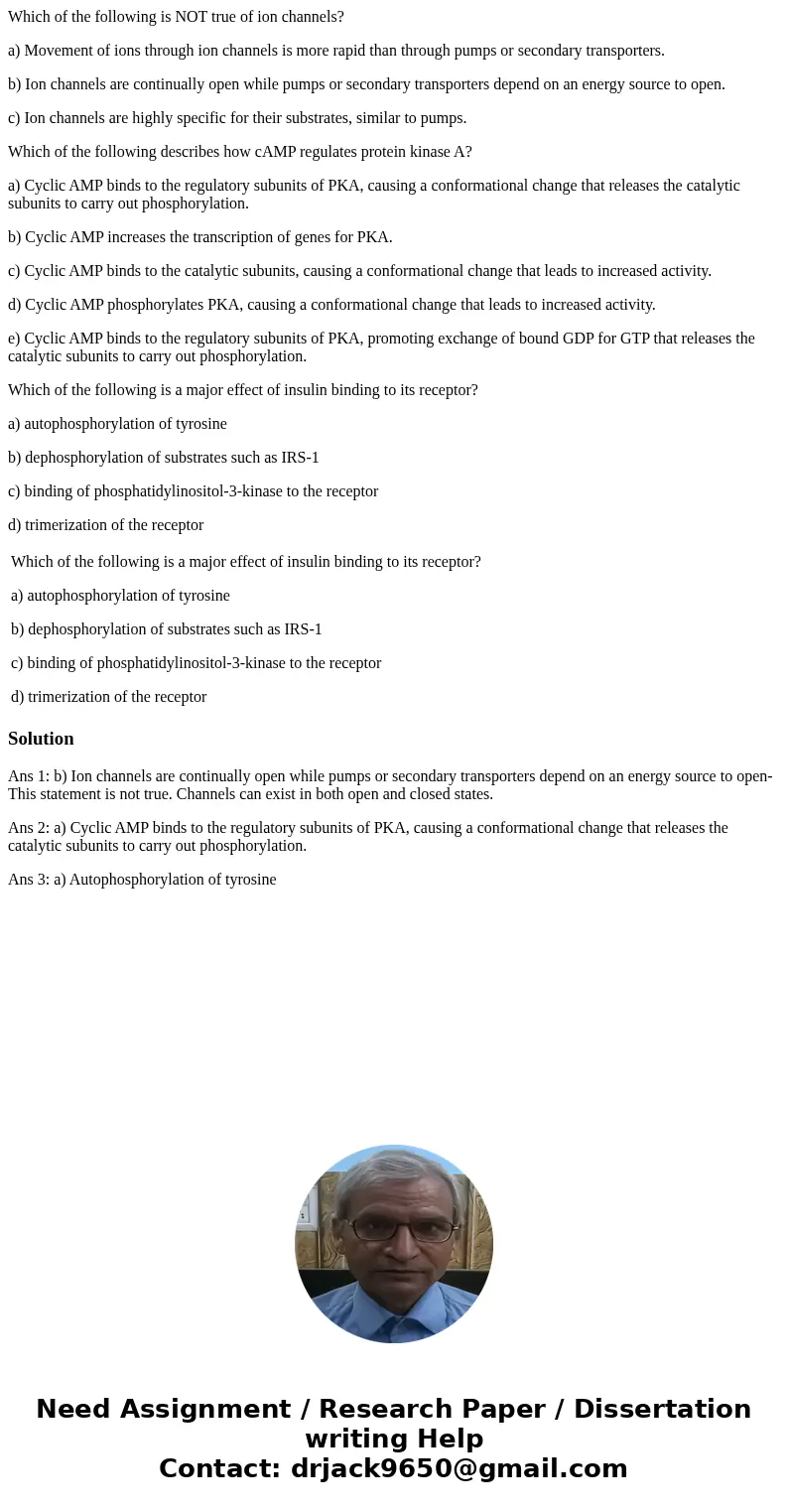Which of the following is NOT true of ion channels a Movemen
Which of the following is NOT true of ion channels?
a) Movement of ions through ion channels is more rapid than through pumps or secondary transporters.
b) Ion channels are continually open while pumps or secondary transporters depend on an energy source to open.
c) Ion channels are highly specific for their substrates, similar to pumps.
Which of the following describes how cAMP regulates protein kinase A?
a) Cyclic AMP binds to the regulatory subunits of PKA, causing a conformational change that releases the catalytic subunits to carry out phosphorylation.
b) Cyclic AMP increases the transcription of genes for PKA.
c) Cyclic AMP binds to the catalytic subunits, causing a conformational change that leads to increased activity.
d) Cyclic AMP phosphorylates PKA, causing a conformational change that leads to increased activity.
e) Cyclic AMP binds to the regulatory subunits of PKA, promoting exchange of bound GDP for GTP that releases the catalytic subunits to carry out phosphorylation.
Which of the following is a major effect of insulin binding to its receptor?
a) autophosphorylation of tyrosine
b) dephosphorylation of substrates such as IRS-1
c) binding of phosphatidylinositol-3-kinase to the receptor
d) trimerization of the receptor
| Which of the following is a major effect of insulin binding to its receptor? a) autophosphorylation of tyrosine b) dephosphorylation of substrates such as IRS-1 c) binding of phosphatidylinositol-3-kinase to the receptor d) trimerization of the receptor |
Solution
Ans 1: b) Ion channels are continually open while pumps or secondary transporters depend on an energy source to open-This statement is not true. Channels can exist in both open and closed states.
Ans 2: a) Cyclic AMP binds to the regulatory subunits of PKA, causing a conformational change that releases the catalytic subunits to carry out phosphorylation.
Ans 3: a) Autophosphorylation of tyrosine

 Homework Sourse
Homework Sourse